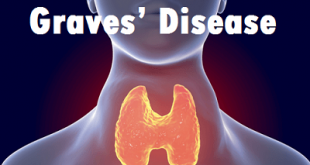Definition A ganglion cyst is a soft-to-firm, round growth located on the wrist joint. Usually about 1-3 cm in diameter, it is nonmobile. It can be found most commonly on the dorsal aspect of the wrist but can occur on the volar side as well. This benign growth is tethered …
Read More »Glaucoma – Diagnosis, Treatment, and Prevention.
Definition Glaucoma is the eye disorder the affects the optic nerve of the eye which receives impulses from the retina and transmits to the brain. It is mainly caused by the high pressure in your eyes. This condition is called ocular hypertension. If this condition is not treated, the first …
Read More »Goitre – Description, Causes, Symptoms, and Medications.
What is Goitre? An enlargement of the thyroid gland, a butterfly-shaped gland which is present at the front of the throat and below the Adam’s apple, is called goitre. The thyroid gland comprises of two lobes that lie on either side of the windpipe joined by a bridge of tissue …
Read More »Graves’ disease – Introduction, Triggers, Diagnosis and Treatment
Introduction Graves’ disease is an autoimmune disorder, meaning the body’s immune system acts against its own healthy cells and tissues. In Graves’ disease, the immune system makes antibodies called thyroid-stimulating immunoglobulin (TSI) that attach to thyroid cells. TSI mimics the action of TSH and stimulates the thyroid to make too …
Read More »Gout – Manifestations, Complications, and Medications.
Introduction Gout is one of the most painful forms of arthritis. It occurs when too much uric acid builds up in the body. The buildup of uric acid can lead to: Sharp uric acid crystal deposits in joints, often in the big toe Deposits of uric acid (called tophi) that …
Read More »Gestational Diabetes Mellitus – Causes, Risk factors, and Treatment.
Introduction Gestational diabetes mellitus defined as “carbohydrate intolerance of variable severity with onset or first recognition during pregnancy”. Diabetes is a common condition in which the body’s cells are unable to effectively obtain glucose from the bloodstream. Glucose is required to provide the body with energy for day-to-day activities. The …
Read More »Gastroesophageal Reflux Disease – Causes, Treatment, and Medications.
Introduction Gastroesophageal reflux (GERD) is a chronic disease that occurs when stomach contents flow back (reflux) into the food pipe (esophagus). At the lower end of the esophagus, where it joins the stomach, there is a circular ring of muscle called the lower esophageal sphincter (LES). After swallowing, the LES …
Read More »Gallstones – Definition, Treatment, and Management.
Definition Gallstones, or choleliths, are solid masses formed from bile precipitates. These “stones” may occur in the gallbladder or the biliary tract (ducts leading from the liver to the small intestine). There are two types of gallstones: cholesterol and pigment stones. Both types have their own unique epidemiology and risk …
Read More » Diseases Treatments Dictionary This is complete solution to read all diseases treatments Which covers Prevention, Causes, Symptoms, Medical Terms, Drugs, Prescription, Natural Remedies with cures and Treatments. Most of the common diseases were listed in names, split with categories.
Diseases Treatments Dictionary This is complete solution to read all diseases treatments Which covers Prevention, Causes, Symptoms, Medical Terms, Drugs, Prescription, Natural Remedies with cures and Treatments. Most of the common diseases were listed in names, split with categories.








